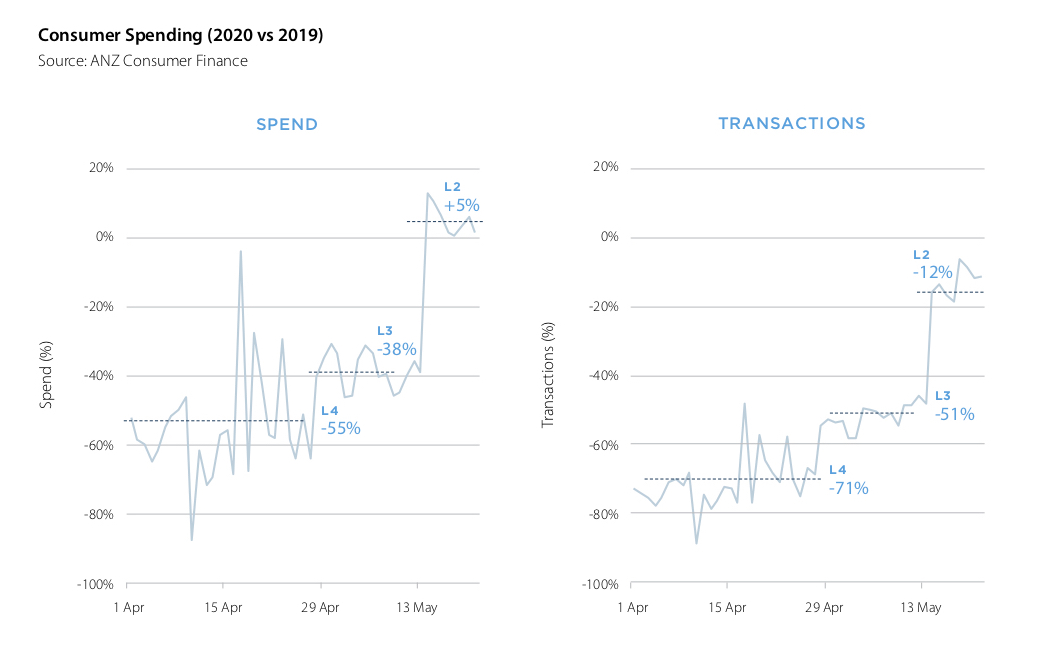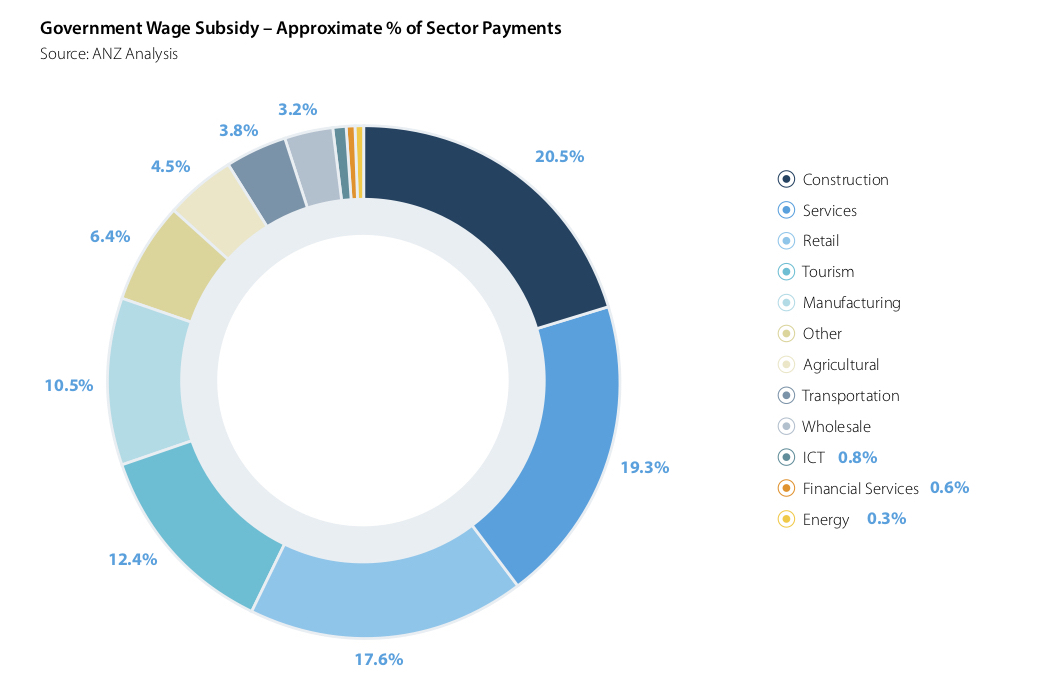-
Commercial landlords in New Zealand are seeing a welcome improvement to rental payment terms in June, according to a new report.
ANZ NZ’s Covid-19: Looking beyond the subsidies report shows the median rental payment to commercial landlords was 31% less in May, during Covid-19 Alert Levels 4 and 3. It improved in June to be 22% less than the same period last year.
The report uses transaction data and covers commercial property rent concessions, consumer spend, the impact of the Government’s wage subsidy scheme and the uptake of working capital.
{CF_VIDEO}
ANZ NZ Managing Director Commercial & Agri Mark Hiddleston said the report was developed to examine the pandemic’s impact on consumer spend and the local business sector, and project potential earnings for some of New Zealand's key industries for the second half of 2020.
“Wage subsidies, rental relief and other factors have provided a buffer against some of the immediate impacts of Covid-19. However, that buffer is limited,” Mr Hiddleston said.
“Businesses should be planning for life after the support packages end, including the consideration that New Zealand may still move up and down Alert Levels."
“The best-laid plan has to adjust and adapt. It must have support from customers, suppliers and other stakeholders."
“The next few months will continue to be challenging. In New Zealand, we have a lot more certainty than other countries and opportunities will arise – the trick is to make sure we are in a position to see and take advantage of them.”
"In New Zealand, we have a lot more certainty than other countries and opportunities will arise – the trick is to make sure we are in a position to see and take advantage of them.”
Mark Hiddleston, Managing Director Commercial & Agri, ANZ NZ Ltd.
Key findings from ANZ’s Covid-19: Looking beyond the subsidies report
Commercial property rent concessions
ANZ transactional data shows commercial property income was down during April, May and June 2020. This was driven by a large number of businesses unable to access their premises during Level 4 and Level 3 conditions, resulting in the temporary re-negotiation of payment arrangements.
Data for the first business day of June 2020 shows two key developments:
- An improvement in transaction volumes to -1%, from -9% in May 2020, suggesting many tenants have moved back to a normal payment frequency.
- A recovering median rental payment amount to -22% in June, from -31% in May 2020. This suggests an improvement in the amount tenants are paying as business conditions have improved.
Consumer spend impact
During Covid-19 Level 4, consumers shopped less often but spent more each visit, according to card data from ANZ. While transaction volumes were down 71% on the same time last year, the average transaction size increased from $48 to $73. Total spending was down 55%.
New Zealand’s move to Alert Level 3 saw spending pick up at the end of April and under Level 2 was up 5% on the same time in 2019.
“This is a good sign for the economy but it’s important to remember these figures include the impact of cash transactions moving to card and virtual card-based payments. It also reflects some pent-up demand from Level 3 and 4 trading conditions,” Mr Hiddleston said.

Wage subsidy
Ministry of Social Development data shows that the Government paid out $10.9b in Covid-19 wage subsidies up to 22 May 2020.
ANZ data shows the approximate breakdown of wage subsidy payments received by industry from March – May 2020. Construction, services, retail and manufacturing have been the largest recipients of the Government’s wage subsidy scheme.

Working capital
Given the impact of Covid-19 on future cash flow and profitability, many ANZ business customers took the opportunity to extend limits on short-term debt facilities during March, April and May 2020.
“Advance payments under the Government’s wage subsidy scheme combined with rental concessions saw the average ANZ business customer’s use of short-term debt facilities reduce from 39.9% at the start of March 2020 to a low of 29.8% during April 2020,” Mr Hiddleston said.
“Over the past few months working capital has provided additional headroom which will be critical in managing through difficult trading conditions in the near future, as businesses transition to new levels of economic activity, staffing, operating models and capital structures.”
Future earnings?
Mr Hiddleston said sectors aligned to tourism with high fixed overheads are at particular risk. This includes motel and accommodation, rental cars and cafes, bars and restaurants.
“This risk increases the longer the tourism sector is essentially closed.”
Sectors primarily servicing the domestic economy, such as road freight, legal services and medical specialists, should be less impacted.
“While areas including building and construction may benefit from completion of committed work, they may face headwinds in later quarters with changes in market confidence potentially impacting new projects.”
Read the full report
-
RELATED ARTICLES
-
These extraordinary times have shown us that – whether you are in the bread or wine business – those that can think on their feet, remain focused on the shifting needs of their customers and also have a plan are the ones most likely to succeed.
5 June 2020 -
ANZ Chief Economist provides 9 insights into how COVID-19 has reshaped New Zealand's economy.
13 May 2020 -
In this podcast ANZ Chief Economist Sharon Zollner takes a macro view of the economy and the impact of COVID-19. Mark Hiddleston, Managing Director Commercial & Agri gives practical insight into what will keep businesses afloat throughout the COVID impacted era.
25 May 2020